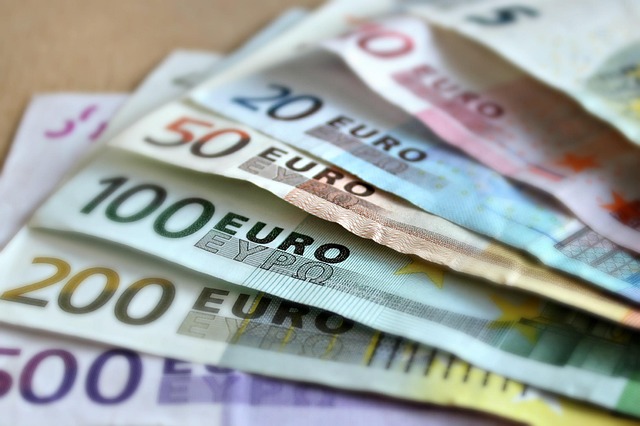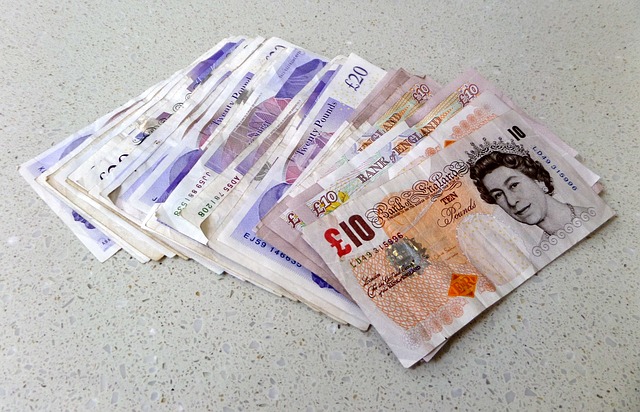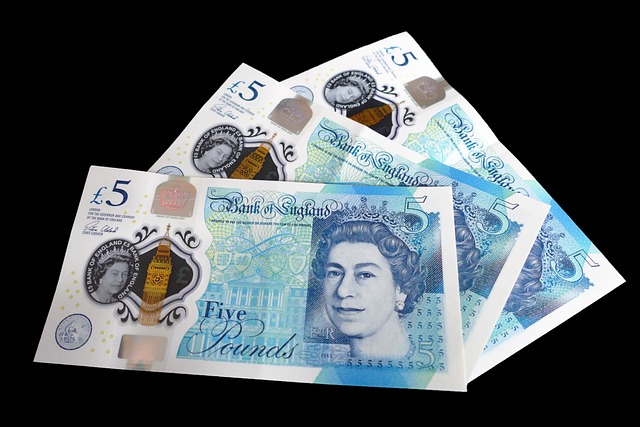Euro (€) is the currency of the Eurozone, used by 19 EU countries, while Pound (£) is the currency of the United Kingdom (UK).
What is the Euro?

The Euro is the official currency of the Eurozone, which consists of 19 European Union member countries. The Euro has a fascinating history, as it was introduced as an electronic currency in 1999 and later transitioned into physical banknotes and coins in 2002. This section will provide a brief history of the Euro, an overview of the currency’s features, and a list of the countries that use the Euro.
Brief History of the Euro
The Euro, the official currency of the Eurozone, has a brief and significant history. Introduced in 1999, the Euro was adopted by 11 European Union (EU) member states. The goal was to foster economic integration and facilitate trade among member countries.
Before the Euro, Europe had a fragmented monetary system with various national currencies. The idea of a single currency began gaining traction in the 1950s, but it wasn’t until the Maastricht Treaty in 1992 that the groundwork was laid for its creation.
The Euro became a reality in electronic form on January 1, 1999, with Euro banks being established and electronic transactions being conducted in Euros. Euro banknotes and coins only entered circulation in 2002.
The introduction of the Euro brought numerous benefits, including simplified cross-border transactions and increased price transparency. It also eliminated currency exchange costs and risks for businesses and travelers within the Eurozone.
Since its inception, the Euro has faced both challenges and successes. It allowed for increased economic cooperation among member states but also faced the turmoil of the 2008 financial crisis and subsequent sovereign debt crises. Despite these challenges, the Euro remains a symbol of European integration and has cemented its position as one of the world’s major currencies.
Euro Currency Overview
The Euro Currency Overview can be represented in a table format as follows:
| Notes | Coins | Symbol | Plural | Value |
| 5, 10, 20, 50, 100, 200, 500 | 1, 2, 5, 10, 20, 50 cents, 1, 2 euro | € | Euros | 1 euro = 100 cents |
The Euro currency consists of notes ranging from 5 to 500 euros and coins ranging from 1 cent to 2 euros. The symbol used for the Euro is €, and the currency is referred to as Euros in plural form. One euro is equivalent to 100 cents.
The table displays the denominations of the Euro notes and coins, the symbol representing the currency, the plural form of Euros, and the value of 1 euro in cents.
It is important to note that this overview provides basic information about the Euro currency and its denominations. Other factors such as exchange rates, economic stability, and usage in international trade should also be considered when assessing the value and significance of the Euro currency.
Eurozone Countries
The Eurozone countries, also known as the member countries of the Eurozone, are a group of nations that have adopted the euro as their official currency. The table below presents a comprehensive list of the Eurozone countries along with some key details about each nation.
| Country | Capital | Population | GDP (in billions) |
| Austria | Vienna | 9 million | 446 |
| Belgium | Brussels | 11 million | 502 |
| Cyprus | Nicosia | 1 million | 24 |
| Estonia | Tallinn | 1 million | 31 |
| Finland | Helsinki | 5 million | 285 |
| France | Paris | 67 million | 2,778 |
| Germany | Berlin | 83 million | 4,134 |
| Greece | Athens | 10 million | 209 |
| Ireland | Dublin | 4 million | 394 |
| Italy | Rome | 60 million | 2,253 |
| Latvia | Riga | 2 million | 34 |
| Lithuania | Vilnius | 2 million | 53 |
| Luxembourg | Luxembourg City | 0.6 million | 69 |
| Malta | Valletta | 0.4 million | 16 |
| Netherlands | Amsterdam | 17 million | 945 |
| Portugal | Lisbon | 10 million | 249 |
| Slovakia | Bratislava | 5 million | 107 |
| Slovenia | Ljubljana | 2 million | 58 |
| Spain | Madrid | 47 million | 1,397 |
These member countries collectively form an economic and monetary union, which involves sharing a common currency, namely the euro. The adoption of the euro brings several benefits to these nations, including ease of trade and travel within the Eurozone. However, it also requires them to implement coordinated monetary policies and maintain fiscal discipline.
What is the Pound?

Also known as the Pound Sterling, it is the official currency of the United Kingdom. Its history dates back several centuries, and it has played a significant role in global trade and finance. This section will delve into the history of the Pound Sterling, provide an overview of the currency’s characteristics, and highlight the countries where the Pound is used.
Brief History of the Pound Sterling
The pound sterling, also known as the pound, has a brief history that showcases its rich heritage and the significant role it has played in shaping the global economy. It dates back to the Anglo-Saxon times, where it was initially used as a unit of weight for silver. In the 8th century, King Offa of Mercia introduced the pound as a currency, and since then, it has evolved to become one of the oldest existing currencies in the world.
During the medieval period, the pound was divided into 20 shillings, with each shilling consisting of 12 pence. This system remained in place until decimalization in 1971, when the pound was divided into 100 pence.
The pound sterling gained international recognition as one of the dominant currencies during the British Empire’s reign from the 17th to the 20th century. It played a crucial role in global trade, colonization, and development.
Throughout its history, the value and stability of the pound have fluctuated due to various economic and political factors. Notable events, such as the Gold Standard era, the UK’s entry into the European Union, and Brexit, have had significant impacts on the pound’s exchange rate and international standing.
Today, the pound is still widely used in the United Kingdom, including England, Scotland, Wales, and Northern Ireland. It is also the official currency of several British Overseas Territories and Crown Dependencies.
Pound Currency Overview
The Pound Currency Overview can be presented in a table format:
| Currency | Currency Code | Subunit | Fractional Unit |
|---|---|---|---|
| Pound sterling | GBP | Pence | 100 pence |
The Pound Currency Overview provides information on the currency symbol (£), currency code (GBP), subunit (pence), and fractional unit (100 pence). The pound sterling, represented by the currency code GBP, is the official currency of the United Kingdom and several other British territories. It is symbolized by £. The pound is divided into 100 smaller units called pence.
The term “pound” originated from the Latin word “libra,” which means a unit of weight. The pound sign (£) is derived from the letter “L” in libra. It is one of the oldest currencies in the world, with a rich history dating back to the 8th century.
In addition to the United Kingdom, the pound sterling is also used in British crown dependencies such as the Isle of Man and the Channel Islands. These territories have their own versions of the pound, which are separate from the UK pound but still tied to its value.
The pound has a strong presence in international trade and is one of the most widely traded currencies in the foreign exchange market. It is known for its stability and is often considered a safe haven currency.
When comparing the pound to other currencies, its exchange rate can fluctuate based on various factors such as economic conditions, interest rates, and geopolitical events. Its value can impact trade balances, exports, and import prices for the United Kingdom.
So, the Pound Currency Overview encompasses all the necessary details about the pound currency, including its symbol (£), code (GBP), subunit (pence), and fractional unit (100 pence). It holds a long-standing history, finds extensive use worldwide, and plays a vital role in international trade.
Countries Using the Pound
| Country | Currency Name | Currency Code |
|---|---|---|
| United Kingdom | Pound Sterling | GBP |
| Isle of Man | Manx pound | IMP |
| Jersey | Jersey pound | JEP |
| Guernsey | Guernsey pound | GGP |
The Pound Sterling, denoted by the currency code GBP, is the official currency of the United Kingdom and its territories, including the Isle of Man, Jersey, and Guernsey. These countries are part of the group of countries using the pound. In the Isle of Man, the currency is referred to as the Manx pound, with the currency code IMP. Similarly, in Jersey, the currency is known as the Jersey pound (currency code JEP), and in Guernsey, it is called the Guernsey pound (currency code GGP).
These territories have their own versions of the pound, which are distinct from the Pound Sterling used in the United Kingdom. All of these pounds are tied to the British pound and can be used interchangeably within the respective territories.
It is important to note that despite being part of the British Isles, Ireland does not use the pound. Instead, Ireland uses the euro as its official currency.
When considering travel or financial transactions involving these countries using the pound, it is essential to be aware of the specific currency being used to ensure accurate monetary exchanges.
To make the most informed decision when comparing currencies, it is crucial to have a clear understanding of the regions and countries that use the pound. This knowledge helps in planning and conducting financial transactions accurately.
Comparison Between Euro and Pound
When it comes to comparing the Euro and Pound, there are several key aspects to consider. From exchange rates to physical appearance, value and stability, use in international trade, and economic impact, each sub-section offers unique insights into these two major currencies.
Exchange Rate
The exchange rate between the Euro and Pound can fluctuate, affecting the value of these currencies in relation to each other. Here is a table comparing the exchange rate between the Euro and Pound:
| Euro (EUR) | Pound (GBP) |
| 1 Euro | 0.89 Pounds |
| 1 Pound | 1.12 Euros |
It’s important to note that exchange rates are determined by various factors including economic indicators, interest rates, and market demand. These rates can change daily or even multiple times within a day.
A true story showcasing the impact of exchange rates is that in 2016, after the Brexit vote, the Pound experienced a significant decline in value against the Euro. This meant that goods and services priced in Euros became more expensive for those using Pounds. For example, a British tourist planning a trip to Europe would have found that their travel expenses increased due to the unfavorable exchange rate. On the other hand, European tourists visiting the UK would have found prices to be relatively cheaper, providing them with more purchasing power.
Understanding and keeping an eye on the exchange rate can be beneficial for individuals and businesses involved in cross-border transactions, as it can have a direct impact on their finances and buying power.
Physical Appearance
- The physical appearance of the Euro and Pound banknotes can be distinguished by their color, size, and design.
- Euro banknotes have a range of colors from light green to dark purple, making their physical appearance quite distinct. The €5 note is gray, €10 is red, €20 is blue, €50 is orange, €100 is green, €200 is yellow-brown, and €500 is purple. Furthermore, the front side of the Euro banknotes showcases architectural styles from different periods, adding to their appeal. On the back side, these banknotes beautifully depict bridges, enhancing their physical appearance even further.
- On the other hand, Pound banknotes follow a consistent color scheme, which is also a part of their physical appearance. The £5 note is blue, £10 is mauve, £20 is green, and £50 is red. Additionally, the front side of Pound banknotes proudly displays portraits of Queen Elizabeth II, providing a distinct physical appearance. Their back side features the portrayal of historical figures, contributing to their overall appeal.
- Moreover, the physical appearance of the two currencies differs in terms of size. The Euro banknotes vary in length as the denomination increases, ranging from 120mm for the €5 note to 160mm for the €500 note. Conversely, Pound banknotes maintain a consistent size of 135mm x 70mm, which is another aspect of their physical appearance.
- Last but not least, the design of the banknotes significantly affects their physical appearance. Euro banknotes have a modern and abstract design, incorporating various security features such as a hologram strip and a watermark. These elements add to their physical appearance while ensuring their authenticity. In contrast, Pound banknotes have a more traditional and detailed design, featuring ornate patterns and intricate engravings. These intricate details contribute to the physical appeal of Pound banknotes.
Fun fact: The Euro banknotes were designed by different artists from the Eurozone countries, enhancing their physical appearance. Pound banknotes, on the other hand, are issued by the Bank of England, giving them a unique physical appearance.
Value and Stability
The value and stability of the Euro and Pound can be compared in terms of exchange rates, inflation rates, and economic performance.
| Aspect | Euro | Pound |
| Exchange rate | The Euro’s exchange rate fluctuates against other currencies, influenced by factors such as interest rates and economic indicators. | The Pound’s exchange rate is influenced by similar factors, resulting in fluctuations against other currencies. |
| Inflation rate | The Eurozone aims to maintain low and stable inflation, typically around 2%. The European Central Bank employs measures to support price stability. | The UK also aims to maintain low inflation, with the Bank of England using monetary policies to control inflation and stabilize the economy. |
| Economic performance | The Eurozone’s economic performance varies among its member countries, with some experiencing stronger growth and stability than others. | The UK’s economic performance is influenced by factors such as trade agreements, foreign investment, and domestic policies. |
Both the Euro and Pound strive for value and stability in their respective economies. While the Euro’s exchange rate fluctuates against other currencies, the Pound also experiences similar fluctuations. Both currencies aim to maintain low and stable inflation rates, with their central banks employing measures to support price stability. Economic performance within the Eurozone and the UK can vary among countries but is influenced by factors such as trade, foreign investment, and domestic policies. It is important to consider these factors when assessing the value and stability of the Euro and Pound.
Use in International Trade
To analyze the use of Euro and Pound in international trade, we can create a table comparing their key attributes:
| Aspect | Euro | Pound |
| Currency Code | EUR | GBP |
| Number of Countries | 19 Eurozone countries | 4 countries (United Kingdom, Jersey, Guernsey, and Isle of Man) |
| Exchange Rate Stability | Relatively stable | Can vary due to economic and political factors |
| International Acceptance | Widely accepted | Accepted in many countries, particularly former British colonies |
| Role in International Payments | One of the major currencies used for international transactions | Significant role, especially in Commonwealth countries |
| Import and Export Usage | Used for trade within the Eurozone and with countries outside the Eurozone | Used for trade with non-Eurozone countries, including the United States and European Union members |
Concerning the use of Euro and Pound in international trade, the Euro is widely utilized as one of the major currencies for transactions. It has significant acceptance in many countries and plays a crucial role in international payments. Notably, the Euro is employed for trade within the Eurozone and with countries outside the Eurozone. On the other hand, the Pound also enjoys widespread acceptance, particularly in former British colonies and Commonwealth countries. Although it is used for trade with non-Eurozone countries, it holds a significant role in trade with the United States and European Union members. The Euro exhibits relatively stable exchange rate stability, whereas the Pound can experience variations due to economic and political factors. Both currencies have their place in international trade, depending on the specific circumstances and countries involved.
Economic Impact
The economic impact of the Euro and Pound is of great importance and can be observed in various aspects of a country’s economy.
- Currency value stability: The stability of a currency is crucial for economic growth and investment. Both the Euro and Pound have a significant impact on the stability of the economies of the Eurozone and the United Kingdom, respectively.
- Trade and commerce: The Euro and Pound play a crucial role in facilitating international trade and commerce. The strength or weakness of these currencies can affect exports and imports, as well as the competitiveness of businesses in the global market.
- Investment and financial markets: The economic impact of the Euro and Pound can also be seen in investment and financial markets. Foreign investors consider the stability of these currencies when making investment decisions in Eurozone countries or the United Kingdom.
- Tourism: The value of the Euro and Pound also impacts the tourism industry. A stronger currency may attract more tourists, as their purchasing power increases when exchanging their own currency. On the other hand, a weaker currency may make traveling to a particular country more affordable for foreign tourists.
- Economic growth: The performance of the Eurozone and the United Kingdom’s economies has a direct impact on the overall economic growth of the region. The stability and strength of the Euro and Pound play a significant role in determining the growth rate of these economies.
The economic impact of the Euro and Pound is far-reaching, affecting currency stability, trade and commerce, investment, financial markets, tourism, and overall economic growth. Understanding how these factors interact is essential when analyzing the economic impact of these currencies.
Which Currency is Better?
Comparing the Euro and the Pound involves various factors, and determining which currency is better depends on individual circumstances and preferences. Here are some key points to consider:
- Geographical Consideration: The Euro is the official currency of 19 out of the 27 European Union member countries, while the Pound is the currency of the United Kingdom. If you frequently travel or reside in Europe, the Euro may be more convenient.
- Exchange Rates: The exchange rate between the Euro and the Pound fluctuates, impacting the value of each currency relative to the other. Analyzing historical trends and consulting financial experts can provide insights into potential currency fluctuations.
- Economic Stability: Both the Eurozone and the United Kingdom have stable economies, but economic factors can influence the strength of a currency. Monitoring economic indicators, such as GDP growth, inflation rates, and employment levels, can help assess stability.
- Investment Opportunities: Consider investment opportunities in the Eurozone and the United Kingdom. Assess factors such as interest rates, stock market performance, and real estate markets to determine which currency offers better investment prospects.
- Trade and Business: If you have international trade or business operations, evaluating the countries you primarily engage with can help determine which currency is more suitable. Assess trade agreements, tariffs, and any potential impact on transaction costs.
- Inflation: Inflation rates can vary between the Eurozone and the United Kingdom, affecting the purchasing power of each currency. Monitor inflation data to understand the potential impact on prices and your personal finances.
- Personal Preferences: Consider personal preferences, such as familiarity with a particular currency, ease of access to banking services, and personal experiences or connections with countries that use either the Euro or the Pound.
Ultimately, determining which currency is better depends on individual circumstances and requirements. Consulting with financial advisors or conducting thorough research can provide valuable insights to make informed decisions.
Frequently Asked Questions
What is the difference between Euro and Pound?
Euro and Pound are two popular currencies with different origins, exchange rates, and symbols. Euro is the currency of European Union countries, while Pound is the currency of Great Britain. Euro is used in countries like Belgium, Spain, Germany, Finland, etc., while Pound is used in the United Kingdom, Channel Islands, and Isle of Man. The symbol for Euro is ‚¬ and the abbreviation is EUR, while the symbol for Pound is £ and the abbreviation is GBP. Euro is made up of 100 cents, while Pound is made up of 100 pence.
Which countries use the Euro and Pound as their currency?
Euro is used in European Union countries such as Belgium, Spain, Germany, Finland, etc. Pound is used in the United Kingdom, Channel Islands, and Isle of Man. Euro is also used in other countries outside the European Union.
What are the unique features of Euro and Pound?
Euro is the second most traded and second largest reserve currency in the world, while Pound is the third largest reserve currency and the fourth most traded currency. Euro is managed by the European Central Bank and the Eurosystem, while Pound is managed by the central bank of Great Britain. Euro banknotes and coins have been in circulation since 2002, while Pound has been in use for a long time.
What is the exchange rate between Euro and Pound?
In the foreign exchange market, one Pound is roughly equal to 1.09 Euro. The exchange rate between Euro and Pound can vary depending on market conditions.
What is the historical background of Euro and Pound?
Euro came into existence in 1995 and was introduced in financial markets in 1999. Pound has been in use for a long time and has historical origins dating back to the Roman Empire, where the term ‘Pound’ was used to signify the weight of silver. Euro and Pound have different origins and historical backgrounds.
What is the significance of Euro and Pound in the global financial arena?
Euro and Pound are major currencies in the foreign exchange market and play significant roles in the global financial arena. Euro is the second largest reserve currency and the second most traded currency, while Pound is the third largest reserve currency and the fourth most traded currency. Both currencies have an important impact on international trade and finance.
Image Credits
Featured Image By – InspiredImages from Pixabay
Image 1 By – martaposemuckel from Pixabay









